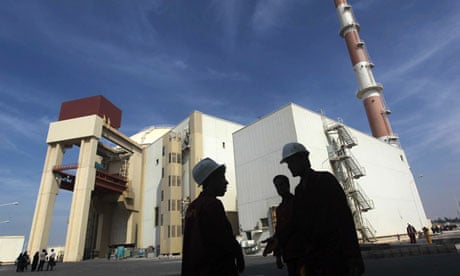Iran has confirmed it has resumed the conversion of medium-enriched uranium into oxide fuel, slowing down the growth of its stockpile and creating more time for talks on its nuclear programme.
Asked about reports from diplomatic sources that conversion was under way again after a break of a few months, the foreign ministry spokesman, Ramin Mehmanparast, said: "This work is being done and all its reports have been sent to the International Atomic Energy Agency (IAEA) in a complete manner."
The significance of the move is that since Iran started making 20% enriched uranium in 2010, international concern has focussed on the possibility that it might ultimately make a nuclear bomb. Uranium enriched to 20% is much easier to turn into weapons-grade (90% enriched) material than the 3.5% enriched fuel Iran has been making for more than a decade, ostensibly for future nuclear power stations.
At the time of the last IAEA report, in November, Iran had produced almost 233kg of 20% enriched uranium, but had diverted only around 100kg towards making uranium oxide fuel, which is much harder to enrich further. The tensions around the 20% stockpile grew in September when the Israeli prime minister, Binyamin Netanyahu, told the UN general assembly that Israel would not tolerate Iranian accumulating enough 20% to make one bomb, which Israeli officials defined as 240kg. Other international experts say it could take as much as 380kg.
The outgoing Israeli defence minister, Ehud Barak, said in October that the Iranian decision to use some of its stockpile to make fuel had put off an Israeli decision to take military action by "eight to 10 months". But the November IAEA report said the conversion process had stopped, raising fears that the stockpile could grow faster, closing the window for diplomacy.
Inspectors told the IAEA board at the time that the halt appeared to have been for technical reasons. If so, those now appear to have been overcome. A new IAEA report is due out in the next few days which will show just how fast the 20% stockpile has been accumulating and how much of it has been used for fuel. It will set the scene for the next round of nuclear talks between Iran and six major powers in the Kazakh city of Almaty on 26 February.
The faster the stockpile is growing the greater the sense of urgency around the talks, although US and British officials reject Israel's argument that its 240kg red line marks a strategically significant milestone in an Iranian advance towards weapons-making capacity.

Comments (…)
Sign in or create your Guardian account to join the discussion